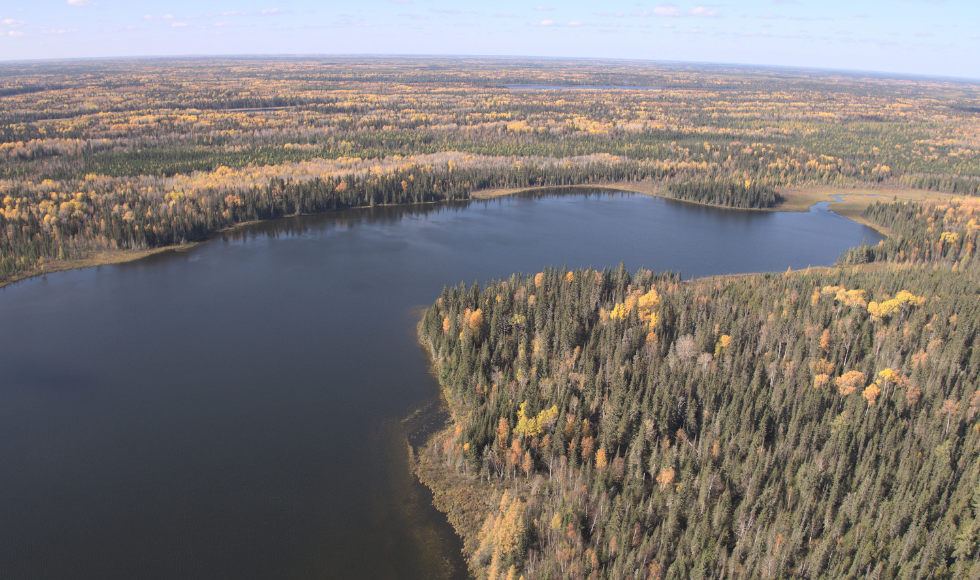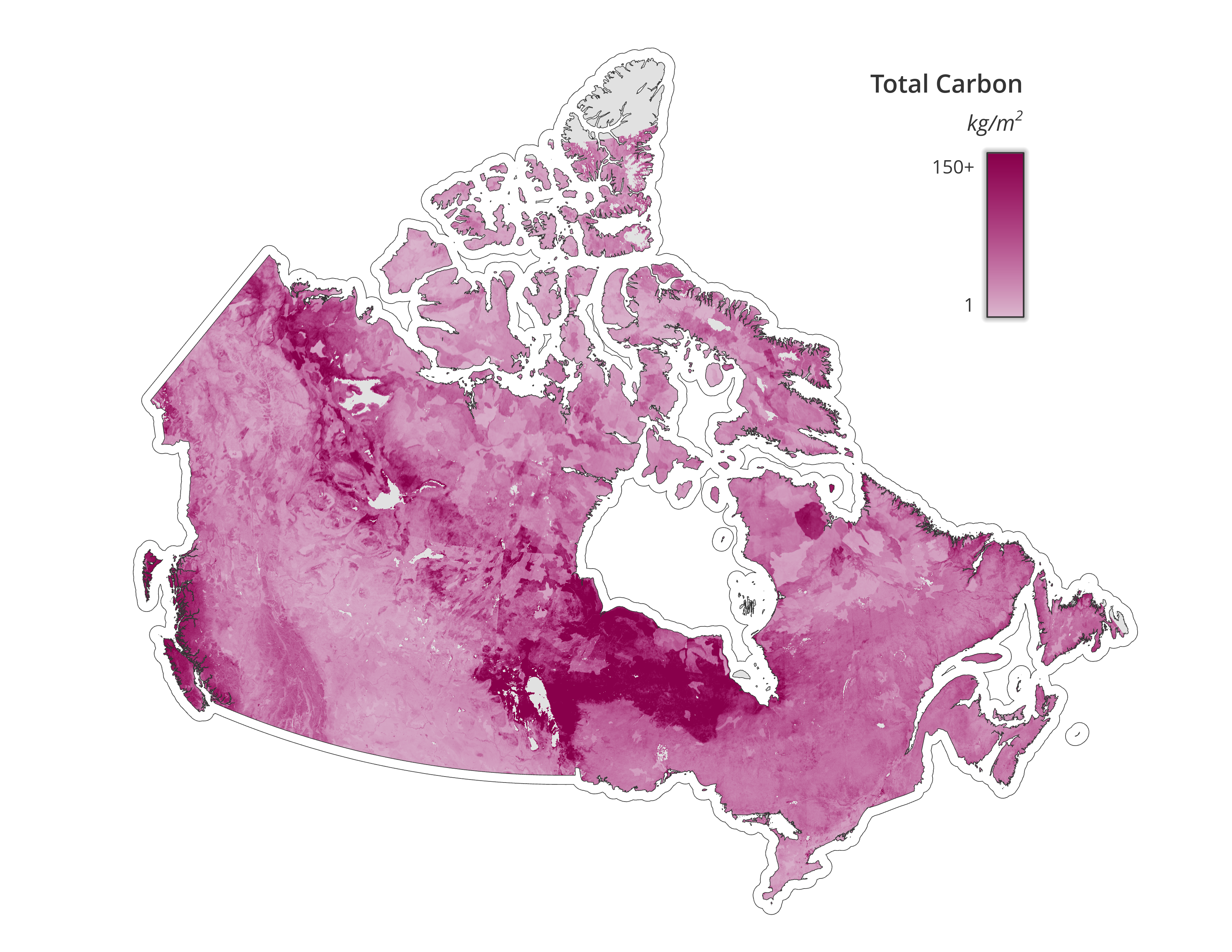McMaster research reveals enormous impact of Canada’s carbon stores on global climate change

405 billion tonnes of carbon is stored in ecosystems across the country, according to researchers from McMaster’s Remote Sensing Laboratory. (Photo courtesy © WWF-Canada / Casa di Media Productions)
November 11, 2021
New data from McMaster researchers shows, for the first time, how much carbon is stored in Canada’s landscapes, and reveals how these carbon-rich areas, if disturbed, could have enormous ramifications for global climate change.
Findings from McMaster’s Remote Sensing Laboratory show 405 billion tonnes of carbon is stored in ecosystems across the country, according to a study led by World Wildlife Canada (WWF-Canada). And, as global temperatures rise and that land decomposes, or is disturbed by human intervention, that carbon could then be released into the atmosphere, accelerating climate change.
The impact could be massive. The total amount of carbon mapped by the researchers is the equivalent to about 30 years of human-caused global greenhouse gas emissions (at 2019 emission levels).
In the News
Read more about this study in national media coverage in The Globe and Mail and CBC
Alemu Gonsamo, assistant professor at McMaster’s Remote Sensing Laboratory, explained how these carbon stores are key to helping hold the global average warming temperature to 1.5°C during a panel presentation at COP26 in Glasgow, Scotland.
“[The] national carbon map will have a huge impact on the way conservation activities and policies are approached to prioritize nature-based climate solutions,” says Gonsamo.
The findings, which are the first-ever comprehensive analysis of its kind, show that 95 per cent of carbon in Canada is found in the top one metre of soil, and 24 per cent of that is found in peatlands. The rest of Canada’s carbon is found in trees, other plants, dead plant material and roots.
“Tens of thousands of field measurements were fed into a machine-learning algorithm to train satellite observations, including space-based laser scanning data, to estimate carbon stocks in plant biomass and soils across Canada,” says Gonsamo.
Researchers say this underscores Canada’s global responsibility to climate change since the findings reveal a quarter of the world’s soil carbon stock is found in Canada.
The highest density carbon-rich areas were found in the old growth forests of coastal British Columbia, large areas of boreal forest, and the peatlands in the Hudson and James Bay Lowlands.

“Knowing where carbon is stored in Canada allows us to strategically protect and manage the right places to prevent billions of tonnes of carbon from being released into the atmosphere,” says Megan Leslie, president and CEO of WWF-Canada. “Protecting these areas will also benefit wildlife by safeguarding habitat for important species at risk.”
One of the actions recommended by the study is to create a Carbon Guardians program to support interested Indigenous communities in monitoring and measuring ecosystem carbon on their lands.
“The Hudson and James Bay Lowlands are covered by peatlands which are an incredibly dense and globally significant carbon storage area,” says Vern Cheechoo, director of lands and resources at the Mushkegowuk Council, which represents seven First Nations in the Western James Bay and Hudson’s Bay.
“These carbon-rich areas are known as the ‘breathing lands’ to our Elders, and hold significant cultural value for the communities in the region,” says Cheechoo.
The research will not only help shape Canada’s approach to carbon emission targets, but will also help WWF-Canada in its goal to restore one million hectares of lost complex ecosystems, protect and steward 100 million hectares of ecologically rich habitat and reduce carbon emissions by 30 million tonnes.
With files from the World Wildlife Canada. See WWF-Canada announcement here.


